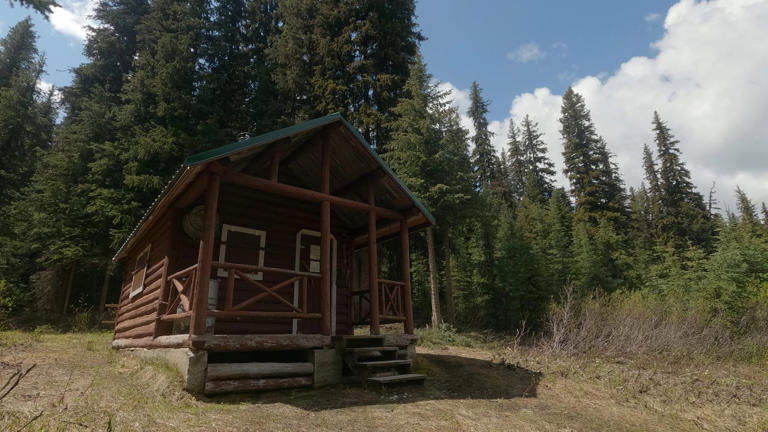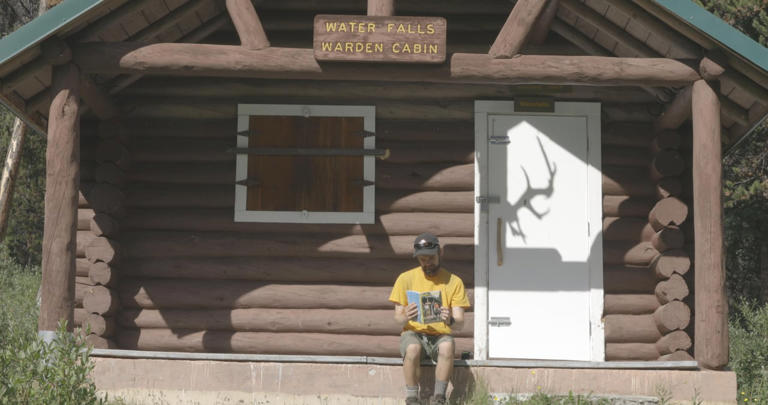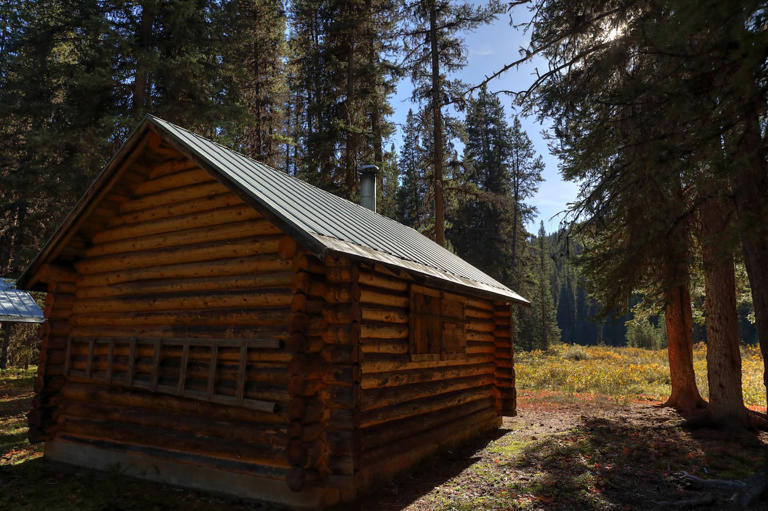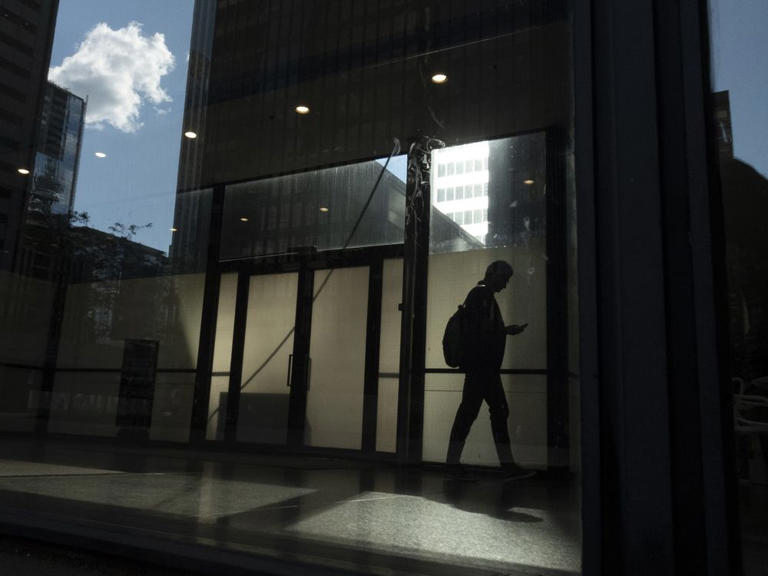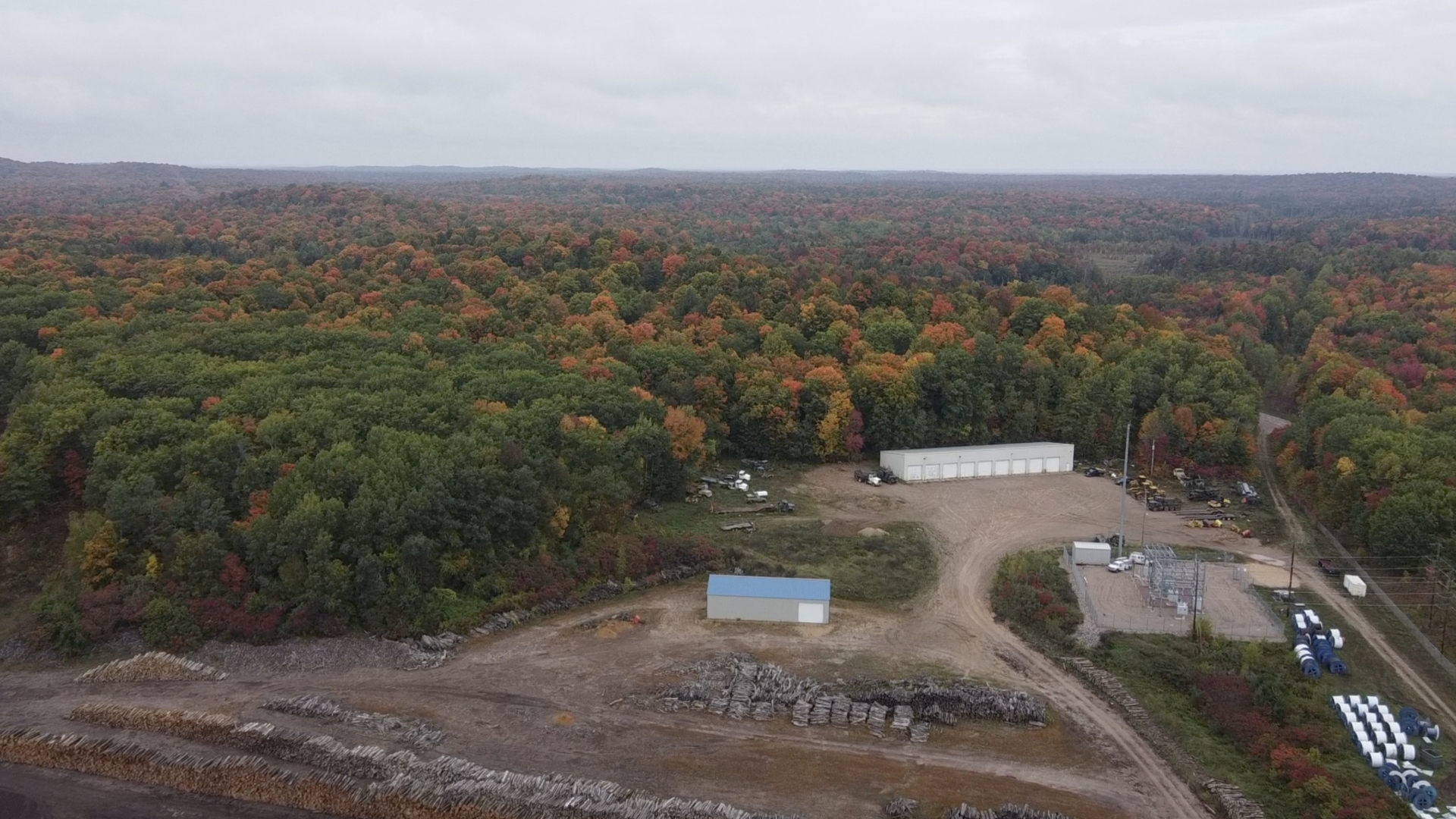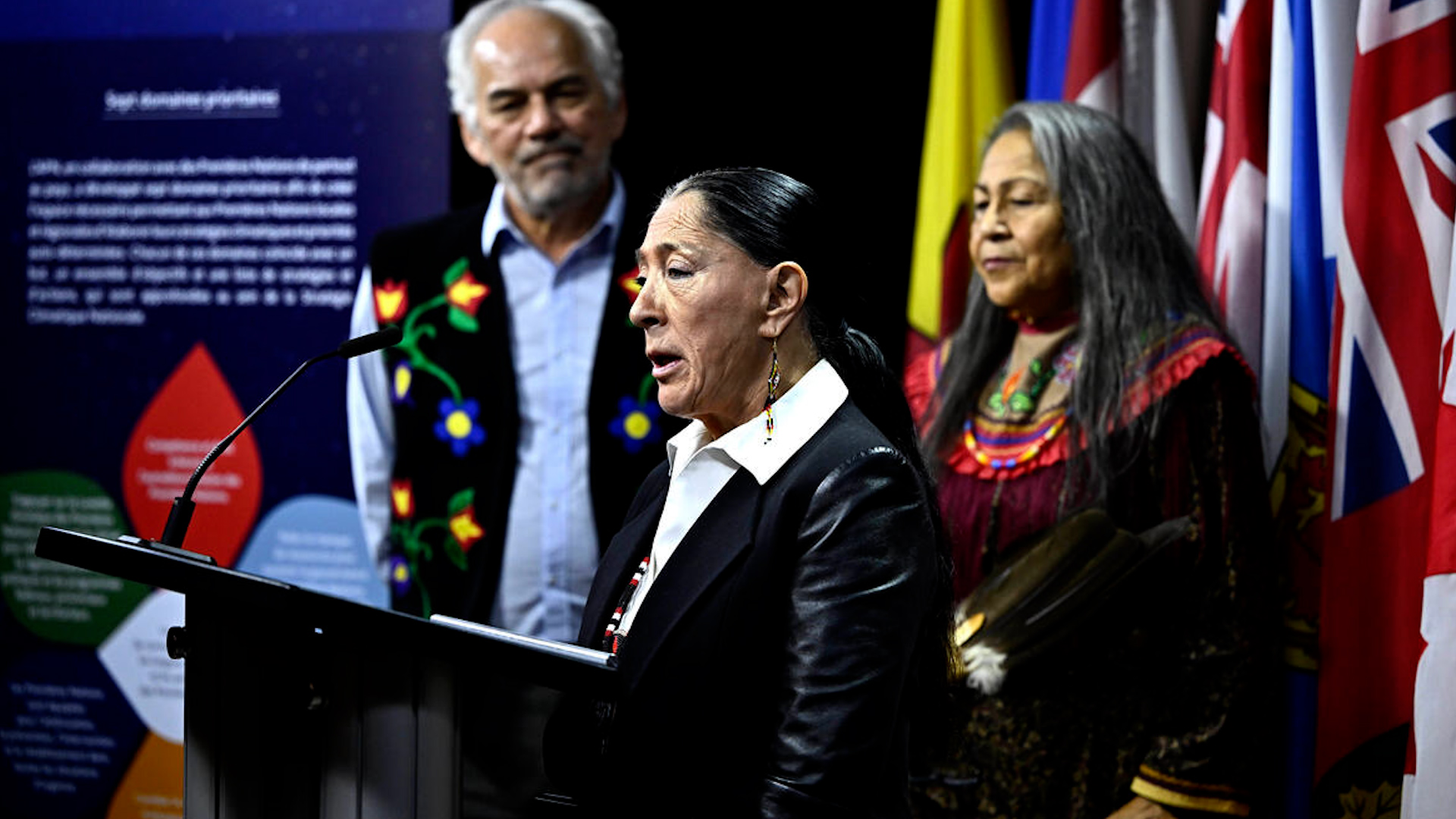By Joe Fisher & Sheri Walsh

Voters in Ohio on Tuesday approved a measure to enshrine the right to seek reproductive medical treatment, including an abortion, in the state constitution.
Nov. 7 (UPI) -- Voters across the country cast their ballots Tuesday on divisive state issues, including in Ohio where voters approved a measure to enshrine abortion access in the GOP-leaning state's constitution and voted to legalize marijuana.
Ohio's abortion amendment -- Issue 1 -- protects the right to seek reproductive medical treatment, including an abortion. It also bars the state from penalizing anyone who has an abortion or provides the treatment.
Ohio held a special election in August to raise the threshold required to approve constitutional amendments, but it failed. The measure would have raised the threshold for approval to 60%. Instead, Issue 1 needed a simple majority to pass, and was approved with 59% of Ohio's voters saying "yes," as 41% voted against the measure.
Ohio's measure to legalize recreational marijuana also passed Tuesday night with nearly 56% of voters saying "yes" to the measure that will allow Ohioans to legally possess and grow marijuana with some restrictions. Twenty-three states currently allow legalized recreational marijuana use.
Meanwhile, Texas had 14 constitutional amendments on the ballot. One amendment, Proposition 3, would ban the imposition of so-called wealth taxes. As of Tuesday night, the wealth tax ban was winning with nearly 60% of the vote, compared to 40% who were opposed.
No state has such a tax, but Texas is attempting to get ahead of any proposals that would implement a tax based on the value of an individual or family's assets, market value or net worth.
Another amendment, which would raise the mandatory and minimum age of retirement for Texas state justices and judges, was losing Tuesday night. The measure to raise the minimum retirement age from 70 to 75, and the mandatory retirement age from 75 to 79 years old, had nearly 62% of voters saying "no" to the measure, with only 38% supporting it.
The numbers continue to come in, as Boulder, Colo., voters considered a ballot measure that would ask the city to prioritize the removal of tents, temporary structures and propane tanks that are within 500 feet of a school or 50 feet of a sidewalk. These items are often associated with people who are homeless.
Boulder has banned these items from parks and public spaces. Tuesday's measure evokes similar actions considered by advocates for the homeless as criminalizing homelessness. The measure does not imply any sort of legal action will be taken against the unhoused.
Kentucky Gov. Andy Beshear wins re-election
Kentucky Gov. Andy Beshear, the Democratic incumbent in the largely conservative state, won re-election Tuesday night. Beshear beat challenger Republican Attorney General Daniel Cameron in a closely contested race by a margin of 53% to 47%.
Beshear was elected in 2019 by a small margin. Cameron was the first Black nominee for governor by Democrats or Republicans in Kentucky.
Mississippi Gov. Tate Reeves, the Republican incumbent, was winning Tuesday night over Democratic challenger Brandon Presley by a margin of 55% to 43%. The Democrat described himself as "pro-life" in an August campaign ad, saying "sometimes the family Bible is the only place you have to turn."
Reeves also said he opposes abortion.
State assembly seats in Virginia, New Jersey up for grabs
Several states have many, if not all of their legislature seats on the ballot. All of the seats in Virginia and New Jersey's general assemblies are up for grabs, with Republicans seeking to flip seats in both states.
Virginia's Republican Gov. Glenn Youngkin has been stumping for his party's candidates for months as it attempts to flip the state Senate. Democrats hold a narrow majority. All 40 Senate seats and 100 House seats are on the ballot.
Youngkin has enacted several controversial policies affecting LGBTQ students in schools, including so-called bathroom bans and policies guiding participation in school activities for transgender youth.
He has also signaled that he will pursue a 15-week ban on abortion if he can get it through the House and Senate.
In New Jersey, Republicans need to flip six Democrat-held seats in the Senate and seven in the state assembly to win a majority. The state has supported Democrats for president in every election since 1992 and has favored Democrats for statewide office in recent years.
Mother of Uvalde shooting victim loses mayoral election
Kimberly Mata-Rubio, the mother of Uvalde shooting victim Alexandria "Lexi" Rubio, lost a special election Tuesday in her bid to become mayor of Uvalde, Texas.
Cody Smith was elected Uvalde's next mayor and will serve a one-year term after former Mayor Don McLaughlin vacated the position to run for a seat in the Texas House of Representatives.
Mata-Rubio, who earned 33% of the votes, said she ran to "be the change I seek" and to honor her daughter who was one of the 21 victims of last year's mass shooting at Robb Elementary School.
Rhode Island elects first Black representative to Congress
Former White House aide Gabe Amo, a Democrat, will become Rhode Island's first Black candidate elected to Congress. Amo defeated Republican Gerry Leonard to win the state's 1st Congressional District seat.
Amo will succeed former Democratic Rep. David Cicilline, who stepped down this summer to become president and chief executive officer of the Rhode Island Foundation.
After his win Tuesday night, Amo said he hopes to help the federal government begin to function again.
"I'm going to be a voice for making sure we can restore confidence and trust despite the Republican Party that is rife with chaos," Amo said.
Story by Maya Boddie • ALTERNET

In response to the overturning of Roe vs Wade by the US Supreme Court, and attacks on women’s rights by right-wing politicians in both Australia and abroad; thousands of people rally in Melbourne to stand in solidarity with abortion rights. Image via Flickr.© provided by AlterNet
Ohio decided to vote "yes" on Issue 1 Monday, enshrining abortion rights in the state's Constitution, The Associated Press reports.
With approval of the amendment, The Washington Post reports, "Ohio would be the seventh state to protect abortion access since the U.S. Supreme Court overturned Roe v. Wade’s federal abortion standard in June 2022."
Per AP, "Opponents had argued that the amendment would threaten parental rights, allow unrestricted gender surgeries for minors and revive 'partial birth' abortions, which are federally banned," but "Public polling shows about two-thirds of Americans say abortion should generally be legal in the earliest stages of pregnancy, a sentiment that has been underscored in both Democratic and deeply Republican states since the justices overturned Roe in June 2022."
According to the report, "Issue 1 specifically declared an individual's right to 'make and carry out one's own reproductive decisions,' including birth control, fertility treatments, miscarriage and abortion."
An abortion vote in Ohio and victories in Kentucky and Virginia have bolstered the Democrats ahead of the 2024 US elections
Democrats and abortion rights advocates scored wins in US off-year elections on Tuesday, including in the conservative states of Ohio and Kentucky.
The results gave a boost to President Joe Biden a year before the 2024 White House race.
Major win for abortion rights in Ohio
In the state of Ohio, which voted for Republican Donald Trump by 8 percentage points in the 2020 presidential election, voters approved a constitutional amendment guaranteeing abortion rights, projections showed.
The vote victory in Ohio's referendum would enshrine the right to "make and carry out one's own reproductive decisions," including on abortion, in the state's constitution.
Biden celebrated the Ohio result, saying that voters "rejected attempts by MAGA Republican elected officials to impose extreme abortion bans that put the health and lives of women in jeopardy," referencing his likely 2024 opponent Trump's slogan "Make America Great Again."
Democrats win in Kentucky, Virginia
In Kentucky, Democratic Governor Andy Beshear was projected to be reelected to a second term, going against the conservative inclination of a state that voted for Trump by more than 25 percentage points in 2020.
Beshear called his win a "clear statement that anger politics should end right here and right now."
The Democrat had made abortion rights a key issue in his run against Republican Daniel Cameron.
Democrats in Virginia who had campaigned on protecting abortion rights also notched victories in state legislative elections, retaking full control of the General Assembly after two years of divided power.
The result is a significant loss for Governor Glenn Youngkin and his fellow Republicans.
"It's official: there will be absolutely no abortion ban legislation sent to Glenn Youngkin's desk for the duration of his term in office, period, as we have thwarted MAGA Republicans' attempt to take total control of our government and our bodies," said Virginia Senate Democratic Caucus Chair, Mamie Locke
MAGA ANTI-DEMOCRATIC SORE LOSERS
GOP lawmakers, Michigan Right To Life sue to block voter-approved abortion rights

Nov. 8 (UPI) -- A group of Michigan GOP lawmakers and the anti-abortion rights group Right To Life of Michigan on Wednesday sued to overturn the will of state voters who approved a 2022 constitutional amendment protecting abortion rights 56.7% to 44.3%.
The lawsuit said that when voters passed that proposal protecting reproductive rights, including abortion, it "created a super-right to "reproductive freedom." At no time in our nation's history has such a super-right, immune from all legislative action, ever been created by a popular vote outside of the checks and balances of a republican form of government."
Michigan Gov. Gretchen Whitmer was named in the lawsuit. Her press secretary Stacey Larouche said Whitmer would work to defeat the lawsuit.
"It shouldn't be lost on people that these right-wing organizations and radical Republicans in the Michigan Legislature are cherry picking courts to try to once again overturn a constitutionally guaranteed right because they can't win with voters," Larouche said.
Related
The Michigan Right To Life lawsuit states that it seeks "to protect and vindicate fundamental constitutional rights" by seeking to overturn the vote giving all Michigan women what it called the super-right of reproductive freedom.
Michigan's right to reproductive freedom constitutional amendment states, "Every individual has a fundamental right to reproductive freedom, which entails the right to make and effectuate decisions about all matters relating to pregnancy, including but not limited to prenatal care, childbirth, postpartum care, contraception, sterilization, abortion care, miscarriage management, and infertility care."
The Michigan Democratic Party wrote on X that state voters chose to protect abortion rights, "Now a group of Republican state legislators and their extremist allies are trying to overturn your vote. Sound familiar? Republicans have no respect for Michigan voters or our democracy."
Michigan Right To Life's president Barbara Listing said in a statement Michigan's voter-approved state constitutional amendment protecting reproductive rights violates the federal U.S. constitution.
"The provisions asserted to be unconstitutional under federal law threaten legal protections for pregnant women seeking healthcare, the rights of physicians to care for patients, and the rights of parents already under attack on many fronts," the statement said.
Listing also claimed that Michigan voters approving a constitutional amendment protecting abortion rights somehow amounts to "the sweeping disenfranchisement both of Michigan voters and of the authority of the legislature in the days and years ahead."
Michigan law allows constitutional amendments approved by voters to be included in the state constitution.
So Michigan Right To Life could pursue its own ballot initiatives to amend the state constitution if they chose to do it.
Ohio voters Tuesday approved enshrining abortion rights protection in its state constitution. It was the seventh statewide vote supporting abortion rights since the U.S. Supreme Court overturned federal abortion rights

